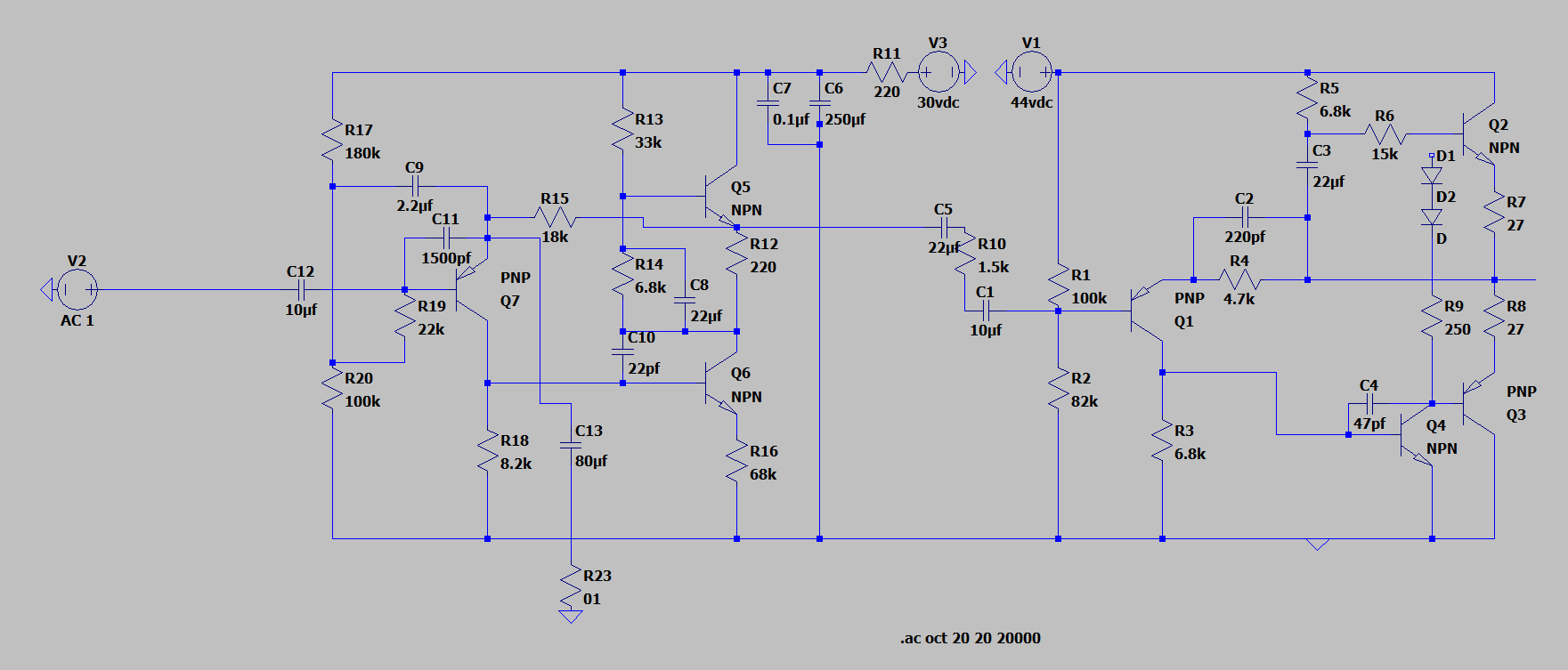Lerok
Active member
Hello, recently I've been messing around in LTSpice with the Trident A Range Preamp schematic mostly out of curiosity (I know it's quite similar to the Helios schematic I just ordered PCBs for, and having tracked most of my teenage years on an 80b, I've fallen in love with the trident sound) - anyways, the more I play with the schematic, the more "meh" it seems due to it's lackluster low frequency response.
At maximum gain, I'm simulating somewhere around a 15dB drop around and below 1k - was this a common 'feature' of the A range? Or am I missing something...
I removed the voltage divider on the input as I didn't see much use for it, but here's what I'm messing with now:

Anyways, seems like a fun small project after I get my helios pres up and running! I suppose now is as good a time as any to ask - has anyone had much success? A brief forum search yielded very few people tackling the trident pre, though I wonder if that's more due to it's relative obscurity (compared to neve/ssl/api/etc) or the lack of solid documentation...
Thanks, as always!
At maximum gain, I'm simulating somewhere around a 15dB drop around and below 1k - was this a common 'feature' of the A range? Or am I missing something...
I removed the voltage divider on the input as I didn't see much use for it, but here's what I'm messing with now:

Anyways, seems like a fun small project after I get my helios pres up and running! I suppose now is as good a time as any to ask - has anyone had much success? A brief forum search yielded very few people tackling the trident pre, though I wonder if that's more due to it's relative obscurity (compared to neve/ssl/api/etc) or the lack of solid documentation...
Thanks, as always!







![Soldering Iron Kit, 120W LED Digital Advanced Solder Iron Soldering Gun kit, 110V Welding Tools, Smart Temperature Control [356℉-932℉], Extra 5pcs Tips, Auto Sleep, Temp Calibration, Orange](https://m.media-amazon.com/images/I/51sFKu9SdeL._SL500_.jpg)


























